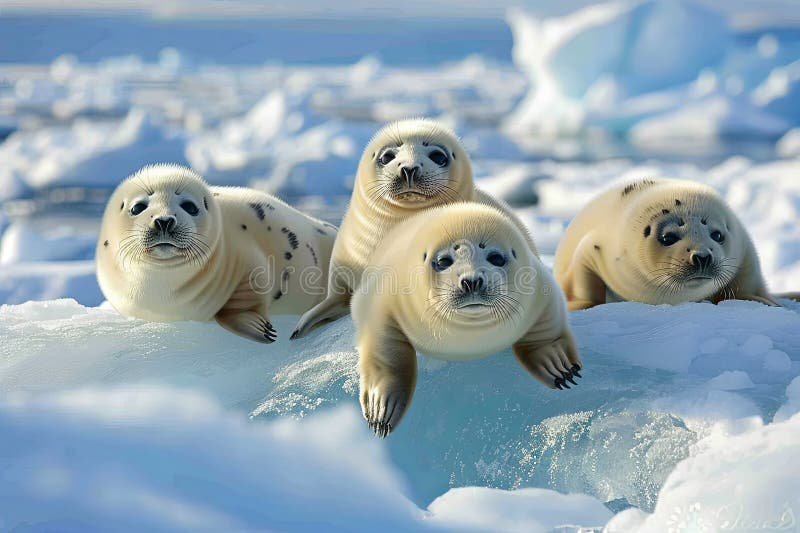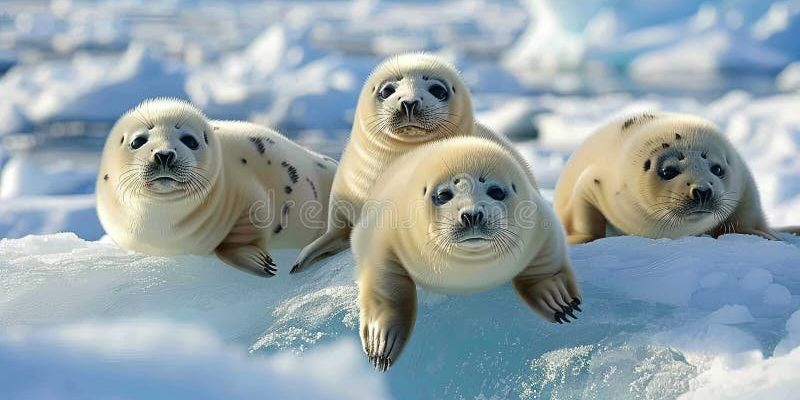
However, seals aren’t just adorable creatures; they are crucial for maintaining oceanic balance. With increasing human activities affecting their habitats, it’s important to stay informed about their conservation status. We’ll dive into the various species of seals, the threats they face, and what’s being done to protect them in this article—a conversation over coffee about our ocean companions.
Understanding Seal Species and Their Habitats
Seals belong to the family Phocidae and Otariidae, which includes true seals and eared seals (like sea lions). There are about 33 known species of seals found in oceans and some rivers worldwide. Each species has its own unique traits and behaviors. For example, the **Harbor Seal** is known for its spotted body and is commonly found off the coasts of North America. In contrast, the **Elephant Seal** is a giant, often weighing over 4,000 pounds, and can be found in the North Pacific.
Seals typically inhabit cold waters, such as around the Arctic and Antarctic regions, but they also thrive in temperate waters. Their habitats include sandy beaches, rocky shores, and even icy expanses. Generally, seals spend a lot of time in the water but haul out on land to rest, breed, or molt their fur. You might be wondering why it’s important to protect their habitats. Well, seals rely on clean water, abundant food sources, and safe breeding areas. When these habitats are threatened by pollution, climate change, or human encroachment, it can jeopardize their survival.
Threats to Seal Populations
Honestly, seals face numerous challenges today, some of which are pretty alarming. A major threat is climate change, which alters ocean temperatures and affects food availability. For instance, warming waters can lead to a decline in fish populations, making it harder for seals to find enough to eat. This is particularly concerning for the **Arctic Seal**, which relies on ice-covered waters for breeding.
Another significant threat is habitat destruction due to human activities. Coastal development, oil drilling, and pollution all take a toll. Oil spills are particularly devastating, coating seals and their food sources with hazardous materials. By now, you might be thinking about how important it is to maintain a clean and healthy environment for these animals.
Additionally, seals are vulnerable to fishing nets and other marine debris, which can trap or injure them. Entanglement in fishing gear can lead to drowning, while ingestion of plastic and other waste can cause health issues. For seals, every interaction with humans can have serious consequences.
Current Conservation Status
So, are seals endangered? The answer isn’t straightforward because it varies by species. Some seal populations, like the **California Sea Lion**, are relatively stable, while others, such as the **Hawaiian Monk Seal**, are critically endangered. The Hawaiian Monk Seal, for example, has suffered from habitat loss and a decline in fish stocks, leading to a population of fewer than 1,400 individuals.
To keep track of these species, organizations like the **International Union for Conservation of Nature (IUCN)** and national wildlife services monitor their populations and health. These bodies assess risk levels, categorize species as vulnerable, endangered, or critically endangered, and promote conservation actions. You might be surprised by how much effort goes into studying and protecting these fascinating animals.
Conservation Efforts and Success Stories
There’s good news on the conservation front! Various organizations and countries are stepping up to protect seals and their habitats. One noteworthy effort is the **Marine Mammal Protection Act (MMPA)** in the United States, which prohibits the hunting of seals and other marine mammals. This legislation has played a significant role in increasing certain seal populations.
In addition, local and global conservation projects focus on habitat restoration and community education. For example, beach cleanups and awareness campaigns help reduce pollution and encourage responsible coastal use. Groups like the **Sea Shepherd Conservation Society** actively work to protect marine life, including seals, by opposing illegal fishing practices and promoting sustainable fisheries.
Furthermore, some seals, like the **Northern Elephant Seal**, have shown remarkable recovery thanks to conservation efforts. They were once hunted to the brink of extinction, but now their numbers have rebounded dramatically, with populations exceeding 200,000. This success story highlights the impact of dedicated conservation work.
What You Can Do to Help Seals
You might be wondering how you can contribute to seal conservation. Well, there are plenty of ways to get involved! Here are some simple steps you can take:
- Educate Yourself: Knowledge is power! Understanding seal biology, their habitats, and threats can empower you to spread awareness.
- Participate in Cleanups: Join or organize beach cleanups in your community to prevent marine debris from harming seals and other wildlife.
- Support Conservation Efforts: Donate to organizations working for marine conservation or volunteer your time to help with research and rescue efforts.
- Advocate: Support policies and legislation that protect marine habitats and wildlife. Contact your local representatives to express your concern.
Even small actions can make a difference. You’ll be surprised at how collective efforts can lead to significant changes.
The Future of Seals: Conservation Challenges Ahead
Despite the progress made in seal conservation, many challenges remain. Climate change is an ongoing threat that requires global cooperation and innovative solutions. As ocean temperatures rise and ecosystems shift, seals will continue to face food scarcity and habitat loss.
Moreover, emerging issues like ocean acidification and plastic pollution are becoming increasingly critical. These factors can have long-lasting impacts on seal populations and marine environments, making it essential for us to address them proactively.
The crucial takeaway is that our choices matter. By making environmentally conscious decisions and advocating for marine life, we can contribute to a healthier planet for seals and other wildlife.
In conclusion, the question of whether seals are endangered cannot be answered with a simple yes or no. The status of seal populations varies widely, and some species are indeed facing critical threats. However, with dedicated conservation efforts and community involvement, there’s hope for these remarkable animals.
As we enjoy our natural world and the wonders it offers, let’s remain vigilant about preserving it. By advocating for seals and their habitats, we can ensure future generations have the chance to experience their beauty and importance. So, let’s work together to protect these captivating creatures—because every little bit counts.

